Swiss Meringue Buttercream
This post may contain affiliate links. Read my full disclosure policy.
Learn to make Swiss meringue buttercream, the go-to frosting for making beautiful, pastry chef-worthy cakes and desserts.
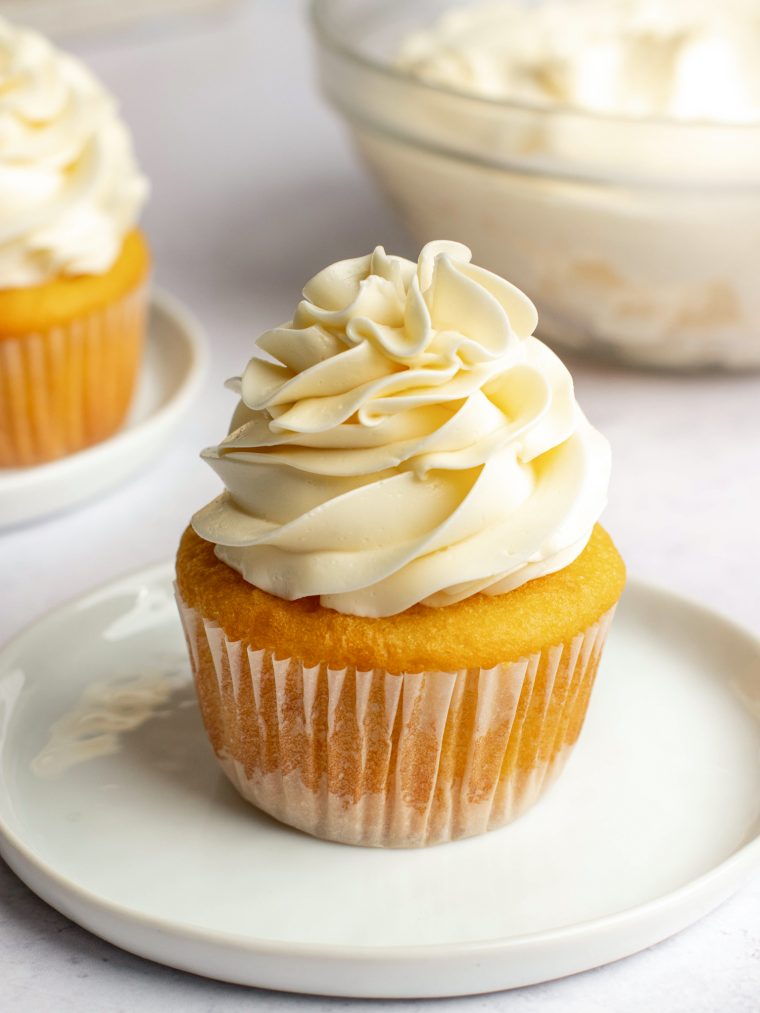
Swiss meringue buttercream is a luxurious, silky frosting loved by pastry chefs and home cooks alike. Its appeal lies in the fact that it is not as cloyingly sweet as many other types of frosting, such as American buttercream and cream cheese frosting, making it ideal for cakes and desserts that require a more delicate sweetness. Additionally, Swiss meringue is highly stable and holds its shape when piped, allowing you to create intricate flowers, borders, and other designs with ease.
The frosting is made by first creating a Swiss meringue, which is a mixture of egg whites and sugar that’s heated over a double boiler, and then whipped using an electric mixer. The meringue is then whipped with softened butter, creating a smooth and creamy frosting. It can be flavored with various extracts, such as vanilla, almond, or lemon, and can also be colored to match the theme of your baked goods.
Table of Contents
“This is the best Swiss meringue buttercream I’ve made so far. It was simple to make, light and silky smooth, and not too sweet.”
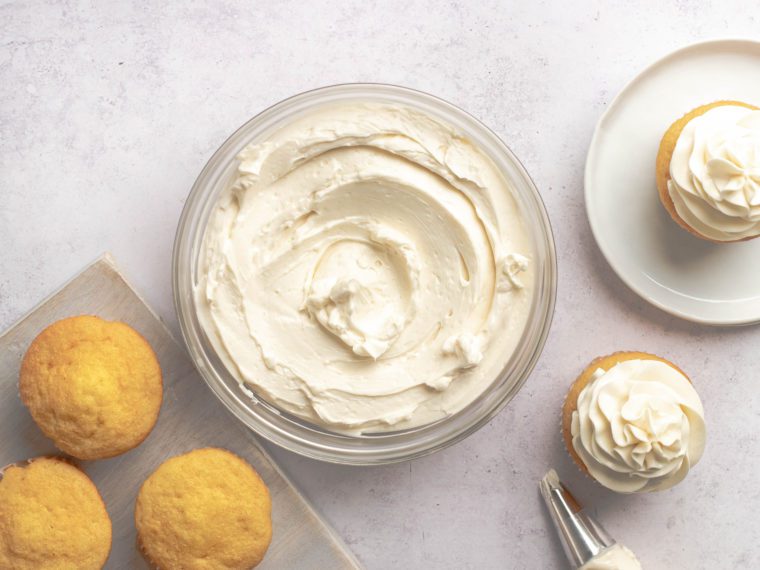
Difference between Swiss, French and Italian Buttercream
Swiss, French, and Italian buttercreams are all egg-based frostings that share a creamy, silky texture but differ in their ingredients and preparation methods.
French buttercream is made by whipping egg yolks with a hot sugar syrup and then gradually adding softened butter; this results in an ultra-rich, velvety frosting that is less stable and slightly more difficult to work with than the other two varieties.
Italian buttercream, like French buttercream, also involves the use of hot sugar syrup, but in this case, the syrup is poured into whipped egg whites to form an Italian meringue, before incorporating softened butter; this creates a highly stable, glossy, and smooth frosting that is a popular choice among professional bakers.
Swiss buttercream, on the other hand, is created by heating egg whites and sugar over a double boiler to form a Swiss meringue, which is then whipped with softened butter, yielding a stable, lighter, and less sweet frosting that is ideal for piping intricate designs.
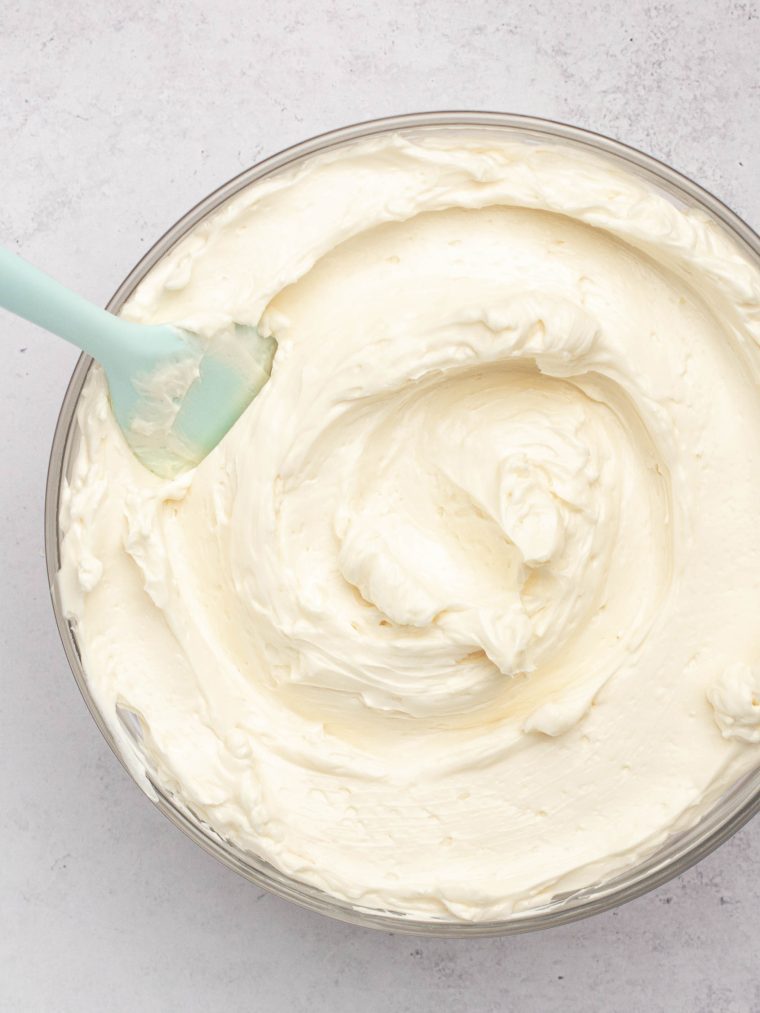
Of the three buttercream options, Swiss is an excellent choice for home bakers due to its ease of preparation and versatility. The process of making Swiss meringue buttercream does not require pouring hot sugar syrup into the mixture, nor does it necessitate using a thermometer.
What You’ll Need To Make Swiss Meringue Buttercream
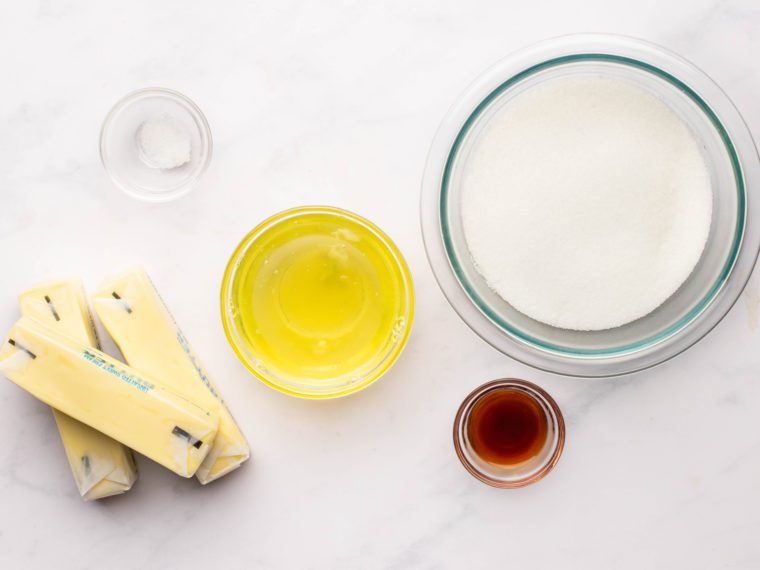
- Egg Whites: Provide the structure for the buttercream, creating the airy meringue base that gives the frosting its light, fluffy texture.
- Granulated Sugar: Dissolves into the egg whites, helping to stabilize the meringue while sweetening the buttercream.
- Butter: Adds richness and a silky mouthfeel, transforming the meringue into a smooth, creamy frosting.
- Salt: Balances the sweetness and enhances the overall flavor.
- Vanilla Extract: Infuses the buttercream with a warm, fragrant note that complements the other ingredients. (For a variation, try adding a drop of almond extract along with the vanilla; a little goes a long way.)
- Jump to the printable recipe for precise measurements
Step-by-Step Instructions
Step 1: Make the Swiss Meringue
Create a double boiler by placing your mixing bowl over a pot of water filled with 1 to 2 inches of water. Bring the water to a simmer. Make sure that the water does not touch the bottom of the bowl or the eggs could overcook.
To the mixing bowl, add the egg whites and sugar.
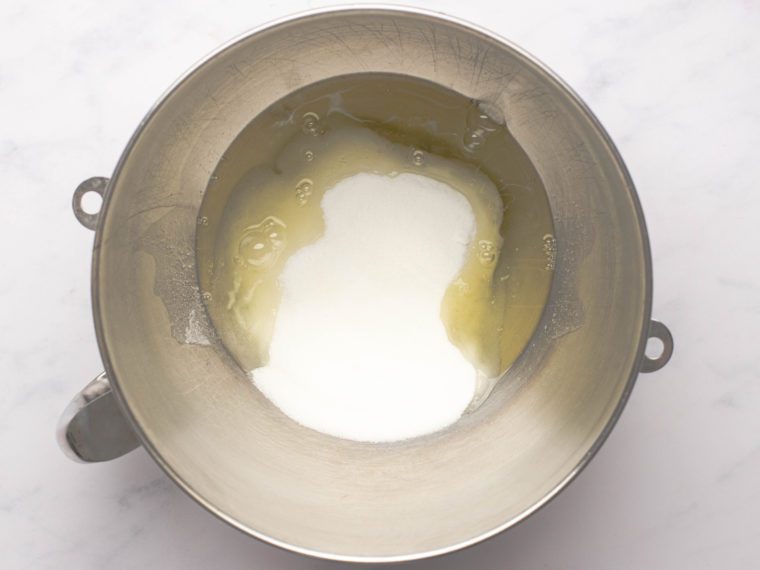
Whisk to combine. Place the bowl over the simmering pot of water, and stir the egg white-sugar mixture frequently for 3 to 4 minutes, or until the sugar is completely dissolved (when you pinch the mixture between your fingers, you shouldn’t feel any granules of sugar).
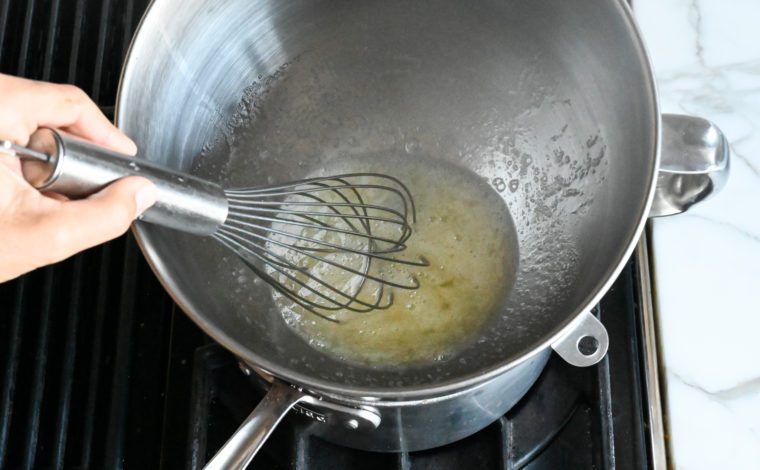
You don’t need to check the temperature, but it should be between 140°F-150°F at this point. Once the sugar is dissolved in the egg whites, remove the bowl from sitting over the pot and place onto a towel on the counter. Let cool for 10 minutes at room temperature.
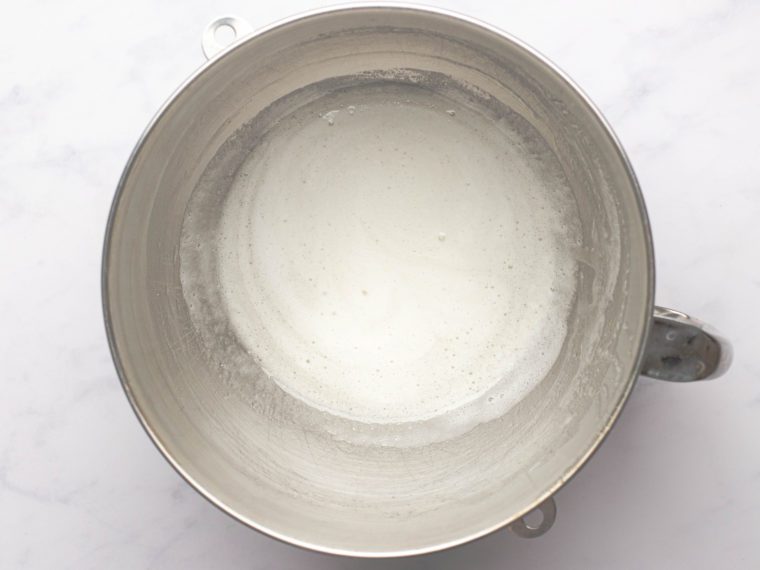
Step 2: Beat the Meringue
Set the slightly cooled bowl of egg-sugar mixture into your electric stand mixer, fitted with a whisk attachment, and beat on high speed for 5 to 7 minutes.
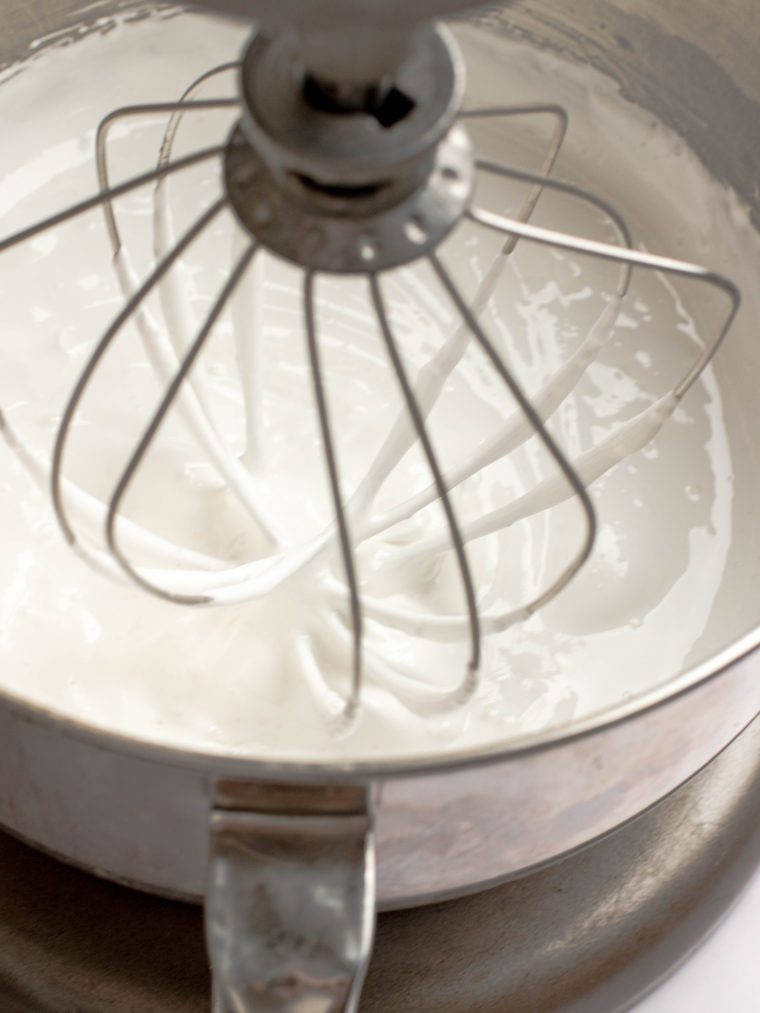
You’ll know it’s ready when the bottom of the bowl feels room temperature and the mixture holds soft to medium peaks.
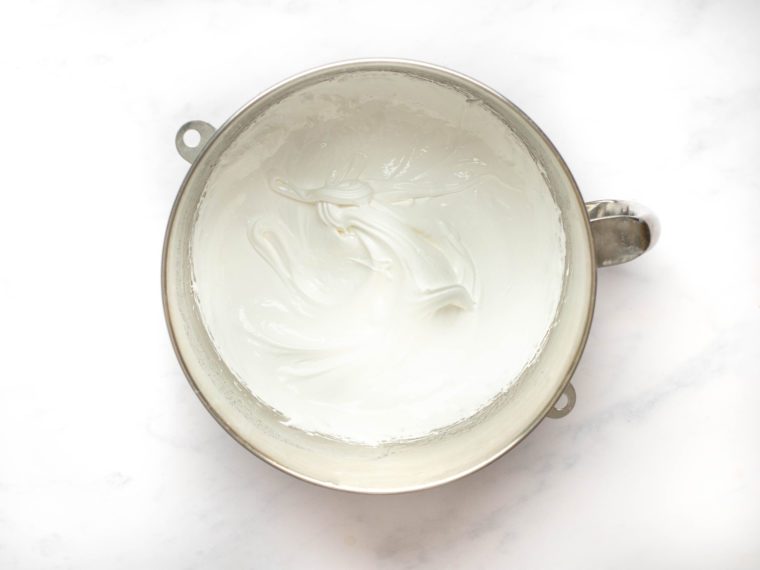
Step 3: Slowly Add The Butter
With the mixer on medium-low speed, slowly add the softened butter cubes, a few at a time, mixing until incorporated between each addition.
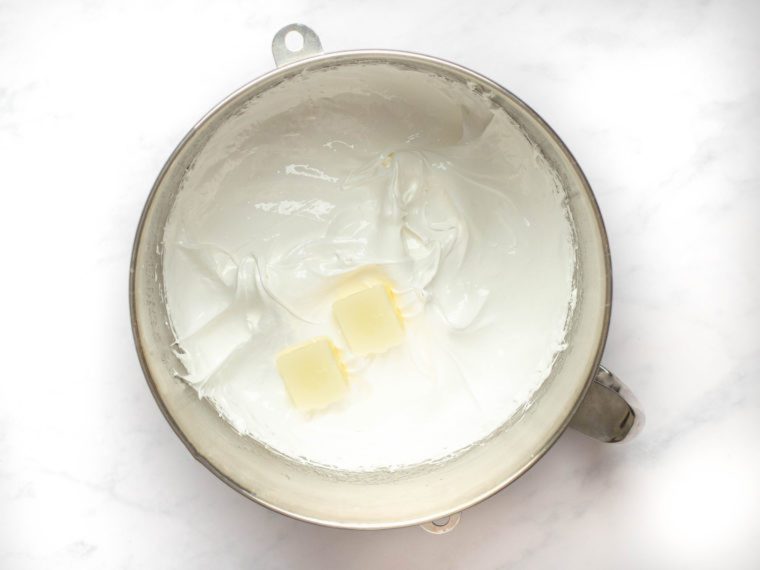
Step 4: Whip
Add the vanilla extract and salt, and whip on high speed for 6 to 8 minutes, until smooth, thickened, and stiff peaks form. Note that the buttercream may look curdled before fully whipped, but it will come together into a smooth icing as you whip it. (If it still looks clumpy or soupy after 8 minutes, see the troubleshooting tip below.)
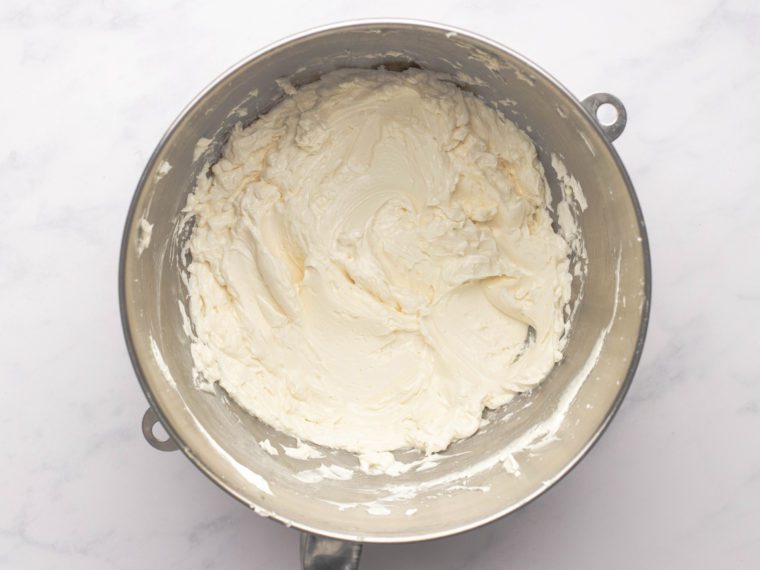
To remove any excess air bubbles, remove your bowl from the stand mixer and fold with a rubber spatula for 1 to 2 minutes.
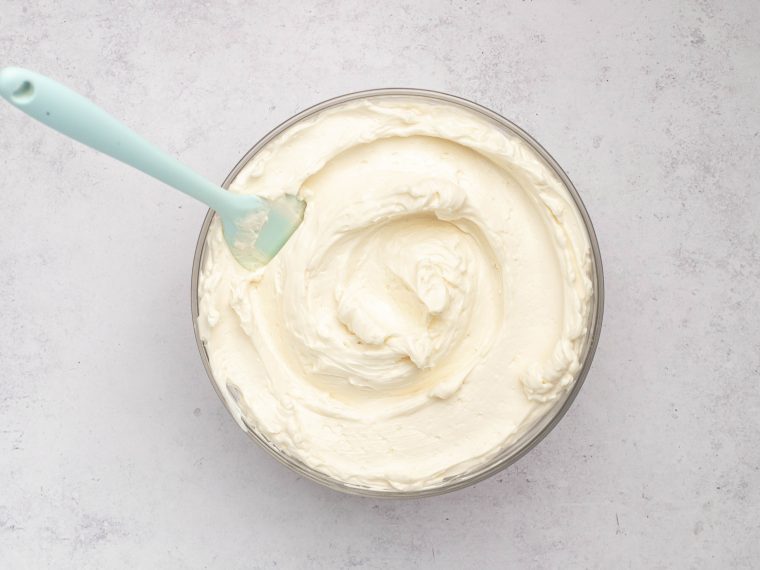
How To Store Swiss Meringue Buttercream
Swiss meringue buttercream is best used right away, or it can sit out at room temperature for up to a day. If you want to get a head start, the frosting can also be refrigerated for up to 5 days. However, it will harden up in the fridge, so before using it, allow it to come to room temperature and then beat it with a mixer for a few minutes until it is smooth and creamy again.
Swiss meringue buttercream also freezes nicely in an airtight container or freezer bag for up to 3 months. Before using, let it thaw to room temperature on the counter, then place it in the bowl of a stand mixer and beat for a few minutes until it’s creamy and smooth again.
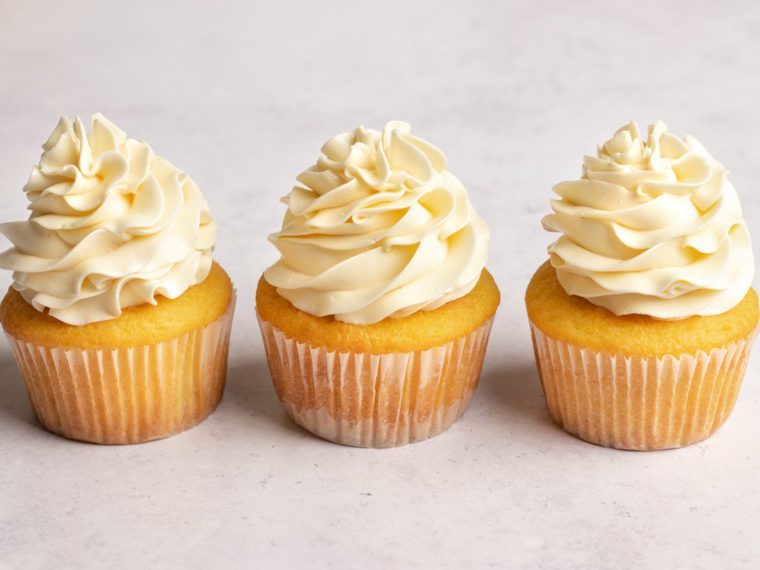
You May Also Like
Swiss Meringue Buttercream
Learn to make Swiss meringue buttercream, the go-to frosting for making beautiful, pastry chef-worthy cakes and desserts.
Ingredients
- 6 large egg whites
- 1¾ cups granulated sugar
- 3 sticks (1½ cups) unsalted butter, at room temperature, cut into 1-tablespoon slices
- ⅛ teaspoon salt
- 1 tablespoon pure vanilla extract
Instructions
- Create a double boiler by placing your mixing bowl over a pot of water filled with 1 to 2 inches of water. Bring the water to a simmer. Make sure that the water does not touch the bottom of the bowl or the eggs could overcook.
- To the mixing bowl, add the egg whites and sugar and whisk to combine.
- Place the bowl over the simmering pot of water, and stir the egg white-sugar mixture frequently for 3 to 4 minutes, or until the sugar is completely dissolved (when you pinch the mixture between your fingers, you shouldn't feel any granules of sugar). You don't need to check the temperature, but it should be between 140°F-150°F at this point.
- Once the sugar is dissolved in the egg whites, remove the bowl from sitting over the pot and place onto a towel on the counter. Let cool for 10 minutes at room temperature.
- Set the slightly cooled bowl of egg-sugar mixture into your electric stand mixer, fitted with a whisk attachment, and beat on high speed for 5 to 7 minutes, or until the bottom of the bowl feels room temperature and the mixture holds soft to medium peaks.
- With the mixer on medium-low speed, slowly add the softened butter cubes, a few at a time, mixing until incorporated between each addition.
- Add the vanilla extract and salt, and whip on high speed for 6 to 8 minutes, until smooth, thickened, and stiff peaks form. The buttercream may look curdled at first, but it will come together into a smooth icing as you whip it. (If it still looks clumpy or soupy after 8 minutes, see the troubleshooting tips below.)
- To remove any excess air bubbles, remove your bowl from the stand mixer and fold with a rubber spatula for 1 to 2 minutes.
- Note: Be sure your mixing bowl is squeaky clean; any residual grease in the bowl will deflate the meringue. Similarly, be sure there are no traces of egg yolk in the egg whites, as the fat will prevent the eggs from whipping properly.
- Troubleshooting: If your buttercream looks curdled or clumpy after whipping, it likely means that your butter was too cold. You can fix this by placing the mixture back over the pot of simmering water and heating for 1 to 2 minutes, stirring constantly, to soften the butter. Following that, beat the mixture again on high speed for several minutes, or until smooth and creamy. Conversely, if the mixture looks soupy after whipping, chances are, your butter was a bit too soft. Place the bowl of the mixer with the buttercream into the freezer for 5 minutes, then remove and continue to whip for several minutes, or until thickened and creamy.
- If you make the buttercream in advance or have some left over, when you’re ready to use it, let it sit out at room temperature for an hour, and then transfer it into the bowl of your electric mixer and whip it for several minutes, or until smooth and creamy. If the buttercream starts to looked curdled or soupy, see the troubleshooting tips above.

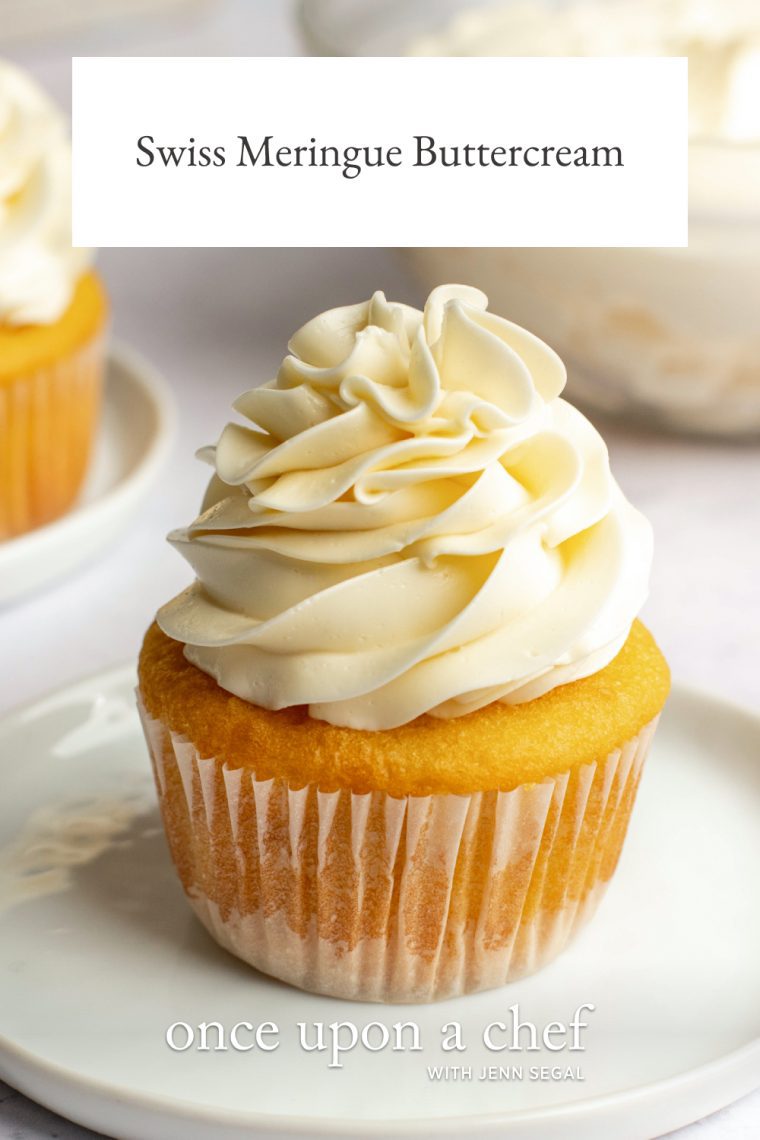
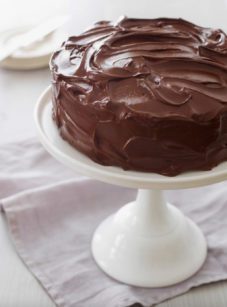
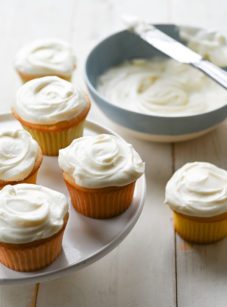
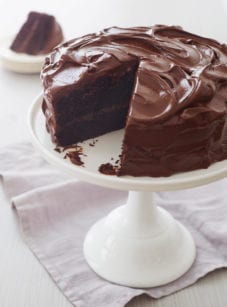
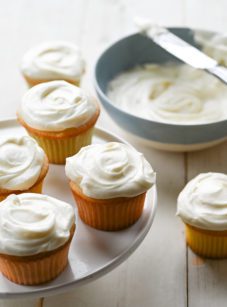
Hi, can I double this recipe? I need two batches and would rather just have to make it once if possible! Thanks!
Sure, Bry, that’s fine.
Hello , in this recipe I don’t see the amount of whip cream , would you add please .
Hi Reine, this recipe doesn’t require any whipped cream. Please LMK if I can help with anything else.
Thank you so much!!!
Can I ice a cake and serve it the next day? Would it require refrigeration in that case?
Hi Lauren, cakes are at their best on the first day that they are baked but it’s fine for you to frost this a day ahead. (I’d store it at room temperature.)
Yum! I’m making a strawberry cake this weekend. Can strawberry reduction be mixed in to give it a pink hue? How would I go about doing that? Thank you in advance Chef!
Hi Brian, frostings like this can be finicky, so I wouldn’t recommend it – sorry! If you’d like to give it a pink hue, I’d add a drop or two of red food coloring. Hope the cake turns out well!
Can you please tell me if this will make a sufficient quantity to frost a 2-layer 9” cake? If not, can you please advise how to adjust the recipe? Thanks!
Yep it should be plenty.
This is the best SMB I’ve made so far. It was simple to make, light and silky smooth, and not too sweet. I’ve found that with some SMB’s the butter is overpowering but this buttercream seemed to have the right balance.
Could I halve the recipe?
Sure!
You’ve described the different types of frosting. Which one produces the smoothest sides and tops to cakes? Which one produces the best piped flowers with as petals and leaves? (I hope they’re one and the same!) Thank you!
Hi Linda, Swiss, French and Italian buttercream will give you equally smooth results, but Swiss is easiest (and it will work for piped flowers).